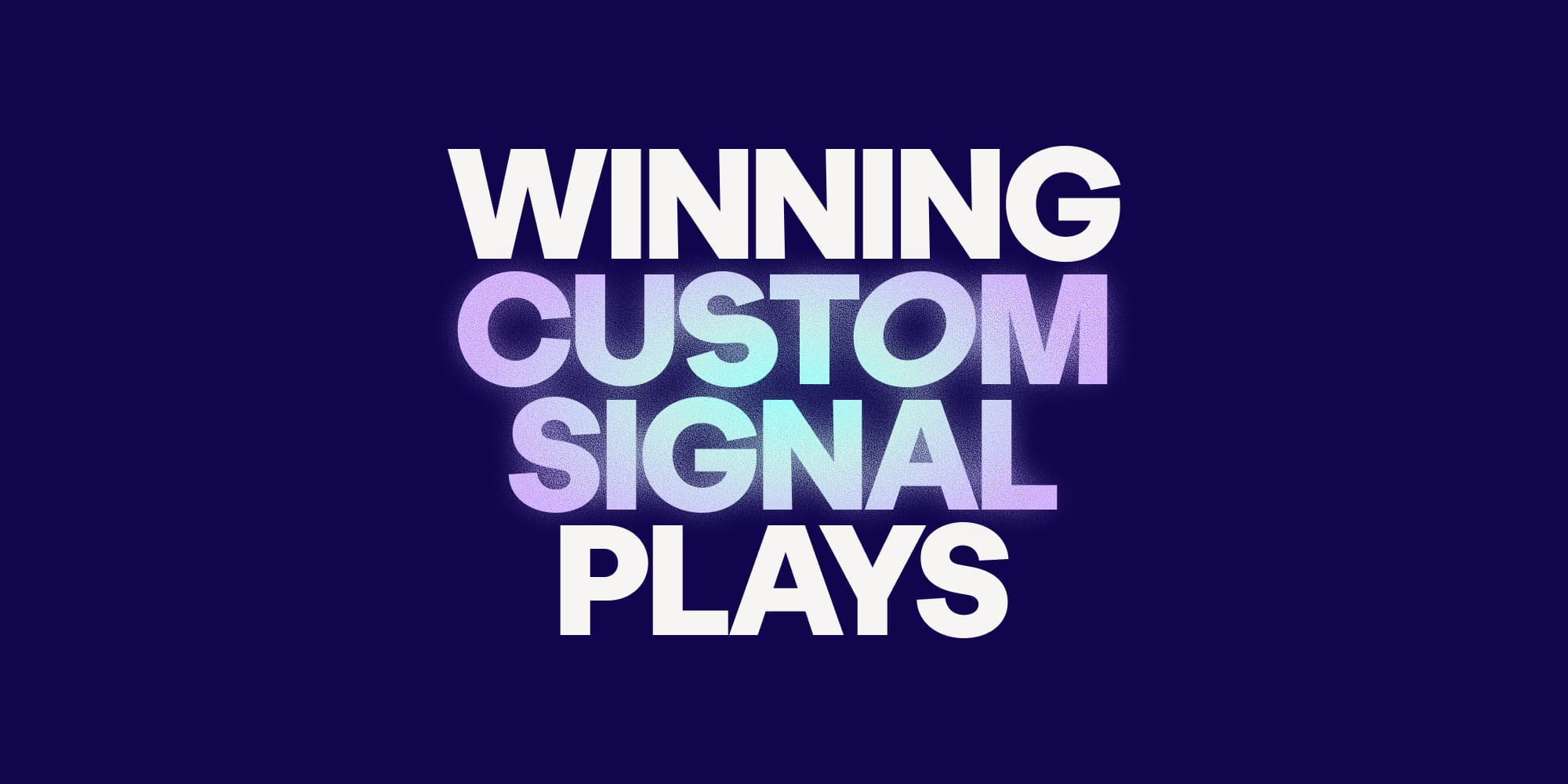How to write email follow ups that double sales conversions
•
April 26, 2021

Follow-up emails are one of the most important things you can leverage when doing outbound sales.
Yet, most salespeople don’t realize it. Our data on 100,000+ cold email sequences shows that follow-up emails are responsible for almost 50% of the interested prospects in an outbound sales sequence.
The importance of outbound sales follow-up emails

In other words, if you send one cold email, only half the people that are interested in your product will reply. That’s why successful salespeople have to be persistent - they will always be one step ahead of the game, just by following up.
In a nutshell, a great follow-up process helps any sales rep 2x their conversion rates!
In this article, we’ll show you a formula with concrete examples to help you create outstanding follow-up sequences.
How to write follow-up emails: general guidelines
Some salespeople might think that outbound sales is all about writing a great first touch. While that is important, the problem is that about 50% of the time you won’t hit the prospect with the right message, at the right time, in your first opportunity.
Follow-up emails are, therefore, a tool to help you have a second, or third, or fourth opportunity.
But you need to do it right. Otherwise, your credibility is hurt and prospects mark you as spam. Being marked as Spam is something you don’t want to happen many times, because it might cause severe deliverability issues to your domain(s).
In general, effective follow-up emails need to:
- Be sent. Just the act of sending follow-up emails is already one step ahead of the game and you’ll see higher reply rates from interested prospects.
- Be personal. This means you should include personal information about your prospects, i.e. their name, job information, or any recent news. Personalization is easy and helps your emails to stand out.
- Be concise and transparent. The emails should be short, straight to the point, and don't overpromise. Remember to provide value with every touch-point.
- Be sent at the right time. Contact prospects when they are more likely to be looking at their inboxes. Early in the morning, late in the afternoon, or immediately after they reply tend to work well.
- Be original (use humor). People appreciate a good laugh. You might break through the noise and get the reply you wanted. You can use a pun, a nice joke, or a GIF that the prospect relates to and understands.
- Be valuable. The most important and the least used one. Follow-up emails are a new opportunity to trigger curiosity with a different message. Test different approaches (different value props, social proof, video demo, case studies, etc) and see which triggers the most engagement of interested prospects.
The formula for an effective sales email follow-up sequence
This formula gives you a framework you can use as a starting point for great follow-up emails. You can use this sequence of emails when you haven’t heard back from a prospect since you sent a first cold email.
If you master this well, you’ll start getting more replies from interested prospects - reply rates between 15% and 20% are excellent, so if you are not there yet, it’s because you still have room for improvement.
1. Follow-up 1: Easier CTA
This first follow-up email should be short, concise, and have a simple goal. If your goal is to schedule a discovery call, use this opportunity to provide a calendar link.
Note: Most people avoid sending a calendar link on a first cold email because prospects might feel it’s too “aggressive”. At this point, however, it’s ok to provide an easy way for prospects that are too busy to engage but still want to learn more about what you said.
Here’s an example:
“Hi {{first_name}},
Did you get a chance to take a look at my previous message?
If you're interested, you can pick a time here.”
2. Follow-up 2: Provide social proof
Perhaps prospects weren’t convinced you could help them with the problem they’re feeling. Leverage examples of how you solved the same issues with other teams in the same industry.
This strategy is beneficial in 2 different ways:
- Prospects feel FOMO if they see other companies in their industry - especially if they’re competitors - being able to solve the issues they aren’t solving right now. This will intrigue them to learn more and schedule the call.
- Even if your social proof isn’t just about how you solve a problem for other companies, it still has a positive impact on how prospects believe you can solve their problems. For example, if you don’t have relevant clients to showcase, you can show some awards that another organization has given to you.
Examples:
- How Hubspot uses an industry award to provide social proof:
“Hi {{first_name}},
Hope you can appreciate my persistence. I've reached out a couple times to see if it makes sense to connect regarding your lead generation and lead management goals.
Since I haven't heard back, I'll assume that HubSpot is off the table for now.
In the meantime, feel free to check out these G2 Crowd reviews on our CRM and the best marketing automation software in 2020. HubSpot was ranked #1 in the industry for both B2B and B2C companies.
Door is always open if we can help in the future.”
- How Workato uses relevant logos they work with to provide social proof:
“Good morning {{first_name}},
Not sure if you saw my first message but it'd be great to chat with you today about how we're helping {{conference}} speakers like Facebook, Nextdoor and Sisense with their integration strategy.
We can meet at my booth (Workato) or we can just hop into a chat room.
What time works for you?”
- Another example you can use:
“Hi {{first_name}},
Just wanted to tell you that we already have several companies like {{company1}} and {{company2}} using the product and with really positive results ({{key_success_metric}}).
Let me know if you have time for a quick 15 min call this week so that I can explain how {{prospect’s_company}} can achieve similar results?”
3. Follow-up 3: Add a case study OR product video and different value proposition
At this point, you have one last chance to grab the prospect’s interest. Perhaps, you didn’t hit the exact problem / solution that your prospect is looking for. Or perhaps, your prospect needs more information to commit to a call with you - don’t take it personally, just give it another try!
Show them a case study about one of the companies you may have talked about in the previous email or show them a video of how the solution works. Sometimes you can combine this with slightly different value propositions. You can read this section on this guide to learn more about how to create and use value propositions.
Examples of follow-up emails:
- How PandaDoc uses additional cases studies in follow-up emails:
“Hey {{first_name}},
Here's another case study from HubSpot about one of our customers: https://www.hubspot.com/integrations/pandadoc/case-study
You can take 10 minutes to read the testimonials if you want to see how PandaDoc has helped our customers close deals faster.
Or we can meet for 10 minutes this Wednesday if you want to see how PandaDoc will help you close deals faster.
Which would you prefer?”
Note: Instead of case studies, you can also use GIFs or videos showing how a certain task is easily done with your solution.
4. Follow-up 4: Humor w/ GIF
At this point, you’ve tried multiple touches with different resources and value propositions. Use your weapon of last resort, humor. There’s not a single formula of how this can work, be creative!
Get inspired with these examples:
- How Gusto uses the office dog to prompt engagement:
“Hi {!first_name},
Any thoughts on that?
-John
P.S. Finnley brought in a friend to work today and I just had to share:

- Another example by Hubspot:
“Hello [prospect name],
I must have called a thousand times ...

On a more serious note, last time we talked about [pain] and how [product] could help [drive X results/accomplish X goal] over [specific timeframe].
Are you still interested in continuing our discussion? If not, please let me know so I can stop blasting Adele.”
- Or just a simple GIF from Startupgifs.com:

Continue mastering the art of the follow-up sales email sequence
- Test multiple strategies. The formula we’ve shown is a great foundation for great follow-up emails but you should test what works best in your specific use case.
- Test different types of resources with different audiences to see which one resonates better.
- Try changing the order of sequence emails.
- Check if any of your sequence stages isn't bringing relevant replies; you might be better off removing it to prevent your reply rates dropping.
- Send a maximum of 4 follow-ups emails. Why? We saw that most interested replies respond until the 4th follow-up email. After this point, you are better off not sending any more emails, because the risk of “hard no” replies increases substantially.
- Send each follow-up email within 2-5 days between each other. Don’t choose a fixed interval because that creates spam patterns in your email activity. You are better off by always randomly choosing a time interval between 2 and 5 days.
Wrapping up...
Having an easy process for great follow-up in your organization is one of the most important steps you can take to increase the number of generated opportunities.
For too long, follow-up emails have been underplayed. They are often too generic and don’t provide any additional value to the prospect. We hope this article gave you concrete insights into how you and your team can raise the game of follow-up emails.
Subscribe to Amplemarket Blog
Sales tips, email resources, marketing content, and more.










